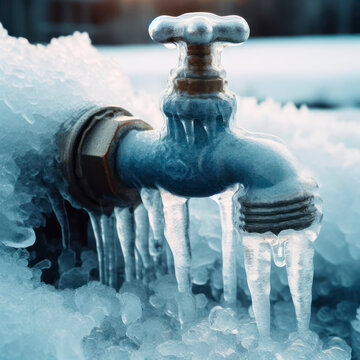Do you find yourself interested in additional info concerning Winter Plumbing Precautions: Preventing Frozen Pipes?

Cold weather can wreak havoc on your pipes, especially by freezing pipes. Below's just how to prevent it from occurring and what to do if it does.
Introduction
As temperatures decrease, the threat of frozen pipelines rises, possibly resulting in expensive repair services and water damage. Understanding how to avoid frozen pipes is vital for homeowners in cool environments.
Avoidance Tips
Shielding vulnerable pipes
Wrap pipes in insulation sleeves or use warmth tape to shield them from freezing temperature levels. Focus on pipes in unheated or outside areas of the home.
Home heating methods
Maintain indoor rooms properly heated, especially areas with plumbing. Open closet doors to permit warm air to circulate around pipelines under sinks.
How to determine frozen pipes
Look for lowered water flow from faucets, uncommon smells or noises from pipes, and visible frost on exposed pipelines.
Long-Term Solutions
Structural changes
Think about rerouting pipelines away from exterior walls or unheated locations. Add additional insulation to attic rooms, cellars, and crawl spaces.
Upgrading insulation
Purchase top quality insulation for pipelines, attic rooms, and walls. Correct insulation helps keep consistent temperatures and lowers the risk of icy pipelines.
Securing Outdoor Pipes
Yard hoses and outdoor faucets
Detach and drain yard hose pipes prior to wintertime. Install frost-proof faucets or cover exterior taps with shielded caps.
Recognizing Frozen Pipes
What triggers pipes to freeze?
Pipelines freeze when exposed to temperature levels below 32 ° F (0 ° C) for extended periods. As water inside the pipes ices up, it increases, taxing the pipe walls and possibly triggering them to rupture.
Threats and damages
Icy pipes can cause water interruptions, building damage, and costly repairs. Burst pipelines can flooding homes and trigger comprehensive architectural damages.
Indicators of Frozen Piping
Identifying frozen pipes early can prevent them from rupturing.
What to Do If Your Pipes Freeze
Immediate actions to take
If you think frozen pipes, maintain taps open up to alleviate stress as the ice melts. Utilize a hairdryer or towels soaked in warm water to thaw pipes slowly.
Conclusion
Preventing icy pipelines requires proactive measures and fast actions. By understanding the reasons, indicators, and preventive measures, house owners can protect their pipes during winter.
6 Proven Ways to Prevent Frozen Pipes and Protect Your Home
Disconnect and Drain Garden Hoses
Before winter arrives, start by disconnecting your garden hoses and draining any remaining water. Close the shut-off valves that supply outdoor hose bibs and leave the outdoor faucet open to allow any residual water to drain. For extra protection, consider using faucet covers throughout the colder months. It’s also important to drain water from any sprinkler supply lines following the manufacturer’s directions.
Insulate Exposed Pipes
Insulating your pipes is an effective way to prevent freezing. Pipe insulation is readily available at home improvement stores and is relatively inexpensive. Pay close attention to pipes in unheated areas such as the attic, basement, crawl spaces, or garage. Apply foam insulation generously to create a buffer against the cold. You can also wrap your pipes in heat tape or thermostat-controlled heat cables for added warmth.
Seal Air Leaks
Inspect your home for any cracks or openings that could let in cold air. Seal any holes around the piping in interior or exterior walls, as well as the sill plates where your home rests on its foundation. Additionally, make sure to keep your garage door closed unless you’re entering or exiting. Leaving it open creates a significant air leak that can lead to frozen pipes.
Allow Warm Air Circulation
During cold snaps, it’s essential to allow warm air to circulate evenly throughout your home. Leave interior doors ajar to promote better airflow. Open kitchen and bathroom cabinets to help distribute heat consistently around the rooms. If you have small children or pets, be sure to remove any household chemicals or potentially harmful cleaners from open cabinets for safety.
Let Faucets Drip
A small trickle of water can make a big difference in preventing ice formation inside your pipes. When temperatures drop significantly, start a drip of water from all faucets served by exposed pipes. This continuous flow helps prevent the water from freezing. Additionally, running a few faucets slightly can relieve pressure inside the pipes, reducing the chances of a rupture if the water inside does freeze.
https://choateshvac.com/6-proven-ways-to-prevent-frozen-pipes-and-protect-your-home/

We had been made aware of that article about Preventing and dealing with frozen pipes through an associate on another web property. Remember to pause to distribute this blog post if you enjoyed reading it. Thank-you for going through it.
Call Today